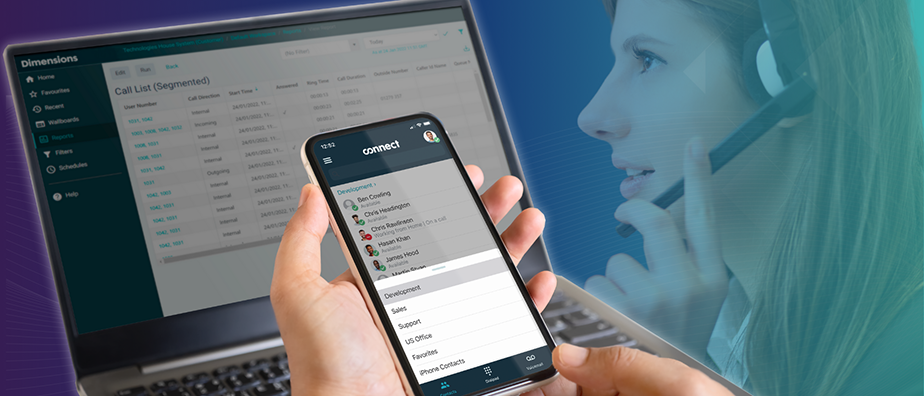It’s 2022! Out with the old and in with the new! It’s time to leave outdated tools that don’t serve your needs best, and one of those might be your phone system.
Back then, telephony was just a series of numbers and calls. Today, many of the terms used for communication have changed. Understanding today’s new various terms is an excellent start to learning the best communication solution for your business. So, let’s help you decide which one is best for your company moving forward in 2022.
POTS
POTS or “Plain Old Telephone System,” is an analog voice transmission system that uses copper twisted pair wires. It’s similar to how we used to handle calls at home. The POTS network was created to allow people to communicate over copper cables, and it has been the standard telephone system used by businesses and residences since the 1880s. The copper phone lines have carried the data from one place to another for a hundred years, but there haven’t been many upgrades on the POTS system since then.
PBX
PBX is a system that enables an organization to route calls internally and externally. PBX works by routing calls to and from the organization’s premises.
VoIP
VoIP is a communication technology enabling people to make and receive calls online. It eliminates the need for traditional phone lines and calls to mobile phones. A hosted PBX is typically utilized to set up VoIP phone services. Cloud-based phone systems are also commonly used to set up VoIP phone services. Since VoIP is dependent on the internet connection, it is essential that the system is secure and has good quality of service.
VoIP Advantages
VoIP carries out various features, such as sending and receiving data signals. These include video calls and sending images. Generally, small offices are suggested to dedicate a minimum of 5 Mbps to ensure optimal performance.
Aside from being a more cost-effective method of communication, VoIP has other advantages that make it stand out. One of the main advantages of VoIP is that it allows businesses to integrate various applications into one system. This saves them time and helps them improve their productivity. With the integration of VoIP into an existing system, all of the company’s data can be displayed on a computer screen.
Mobility and flexibility are also two main advantages of VoIP. Employees can use their devices wherever they are in the office. VoIP can also be used over various softphones and video conferencing equipment.
VoIP’s immense scalability trumps traditional phone systems. As businesses grow, the cost of these additional components increases with other systems. VoIP, on the other hand, allows companies to scale freely without incurring expensive additional charges.
POTS Advantages
POTS is typically the easiest type of telephone system to install. It doesn’t require much knowledge or experience to get started. One of the main advantages of POTS over VoIP is that it allows the handset to continue working even if the power is lost. So even if the power goes out, the telephone line can still function.
POTS is also commonly used for various applications such as emergency phone lines and elevator lines. Even though many local codes require businesses to have a POTS line to handle emergencies, most of them only need a few lines to operate efficiently.
POTS versus VoIP
Despite its advantages, POTS is still experiencing a decline in popularity as more businesses migrate to VoIP. VoIP is designed to work seamlessly with applications that run on the Internet, and POTS was built when the infrastructure was not up to par.
The cost of a phone system is often the deciding factor in choosing to avail a service. VoIP is typically the more cost-effective option since it works on a subscription model. Keeping in mind the cost, VoIP is more likely to be the better option.
Aside from these, the cost of international calls and long-distance calls can also burn a massive hole in a company’s budget. But, again, VoIP can help minimize this expense.
If your company plans to implement a POTS system in the near future, you will most likely have to spend more money on additional devices and bandwidth. Since most businesses rely on the internet to function, it makes sense to extend the usage of this network by using VoIP.
VoIP is a better option for most companies with multiple locations due to technological advancements. More customizations are available with VoIP rather than POTS because you can easily integrate the service with many CRMs and applications that employees use.
Now that 2022 has come around, it’s time to go out with the old and in with the new. POTS is outdated and severely inflexible. You need a communication system that best serves your needs, and SimpleVoIP knows where to get you started.




